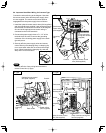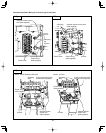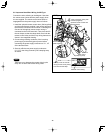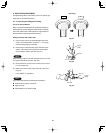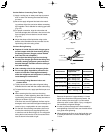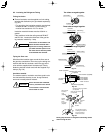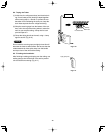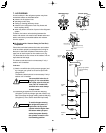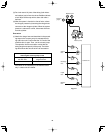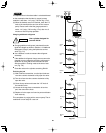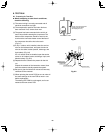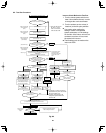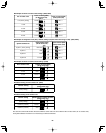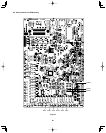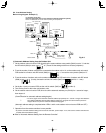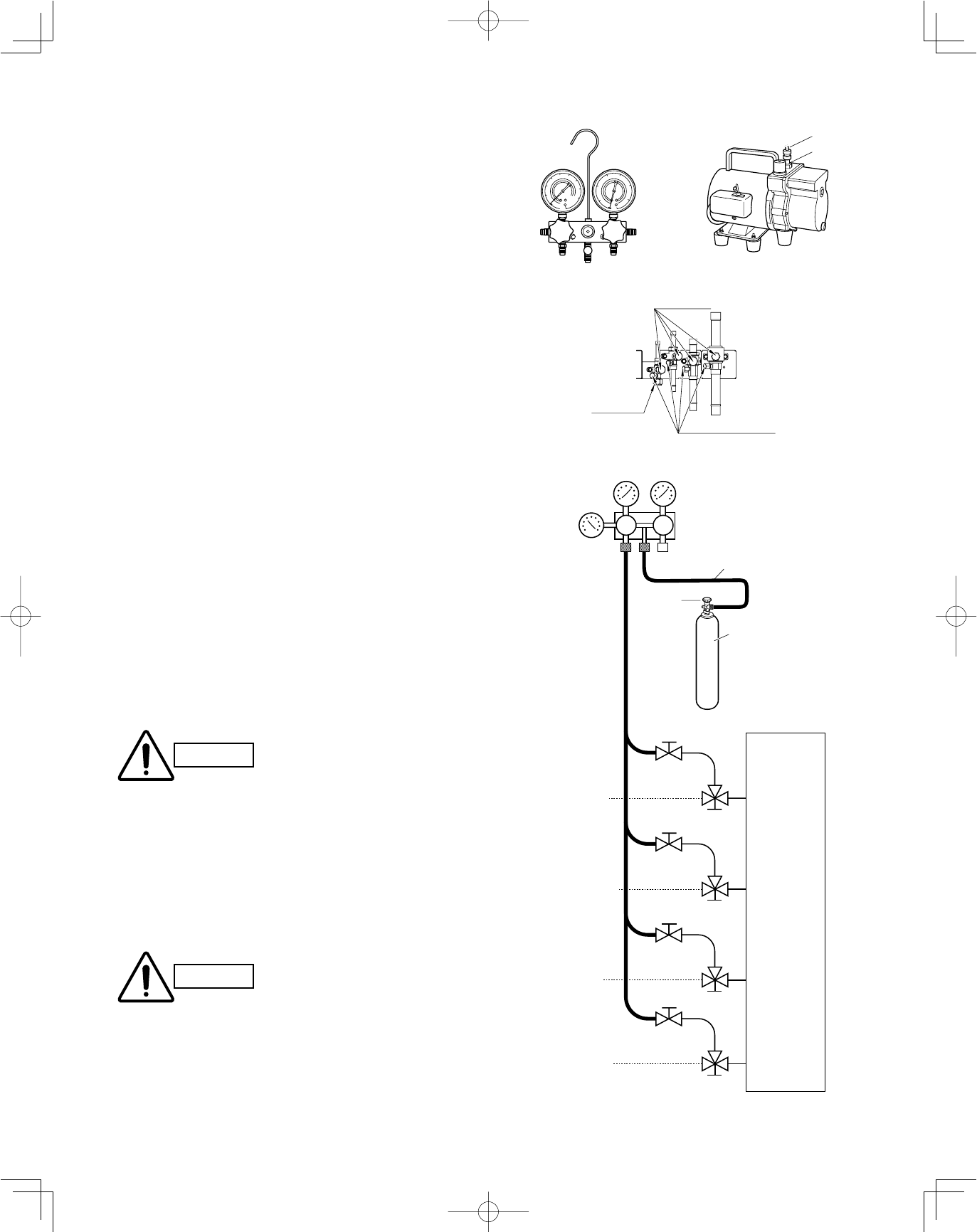
80
Fig. 7-1a
Fig. 7-2
Fig. 7-1b
Fig. 7-3
7. AIR PURGING
Air and moisture in the refrigerant system may have
undesirable effects as indicated below.
●
pressure in the system rises
●
operating current rises
●
cooling (or heating) efficiency drops
●
moisture in the refrigerant circuit may freeze and
block capillary tubing
●
water may lead to corrosion of parts in the refrigerant
system
Therefore, the indoor unit and tubing between the
indoor and outdoor unit must be leak tested and evacu-
ated to remove any noncondensables and moisture
from the system.
■
Air Purging with a Vacuum Pump (for Test Run)
Preparation
Check that each tube between the indoor and outdoor
units have been properly connected and all wiring for
the test run has been completed. Remove the valve
caps from all service ports on the outdoor unit. (Fig.
7-2) Note that all service valves on the outdoor unit are
kept closed at this stage.
The balance tube leak test is not necessary if only 1
outdoor unit is installed.
Leak test
(1) Attach a manifold valve (with pressure gauges) and
dry nitrogen gas cylinder to all service ports with
charge hoses.
The balance tube leak test is not necessary if only 1
outdoor unit is installed.
(2) Pressurize the system to no more than 469 psig
(33 kgf/cm
2
G) with dry nitrogen gas and close the cyl-
inder valve when the gauge reading reaches 469 psig
(33 kgf/cm
2
G). Then, test for leaks with liquid soap.
Manifold gauge
Outlet
Inlet
Vacuum pump
Manifold valve
Pressure
gauge
Lo Hi
Charge hose
Outdoor unit
Close
Open
Discharge
tube
Suction
tube
Liquid
tube
Nitrogen gas cylinder
(In vertical standing
position)
Close
Close
Open
Balance
tube
Open
Close
Open
Cylinder
valve
Use a manifold valve for air
purging. If it is not available,
use a stop valve for this pur-
pose. The “Hi” knob of the
manifold valve must always
be kept closed.
CAUTION
CAUTION
To avoid nitrogen entering
the refrigerant system in a
liquid state, the top of the
cylinder must be higher than
the bottom when you pres-
surize the system. Usually,
the cylinder is used in a ver-
tical standing position.
Valve cap
Service port cap
Flare nut




